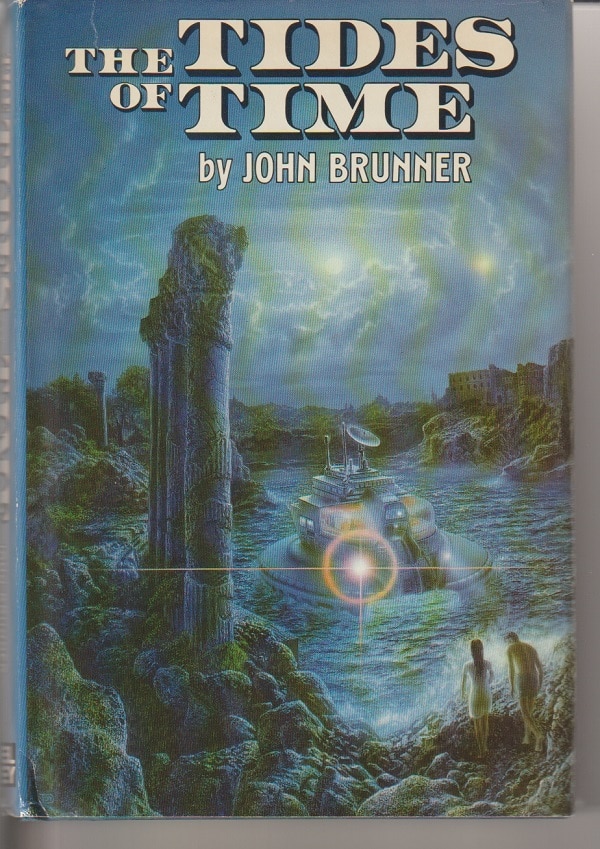In its odd way, John Brunner’s 1984 novel The Tides of Time is an adventure story.
It’s also a thriller and a mystery that propels the reader along in search of answers.
It opens in an April in the near future as Gene and Stacy are trying to escape from “them,” whoever “they” are. Their boat brings them to a Greek island, named Oragalia and shaped like a sphinx, and to a cave in between the seeming legs of the sphinx.
They settle in the cave and make love.
The second chapter opens in the same spot on Earth but in an earlier time, around the 1980s when Brunner was writing. Again, there is Gene and Stacy, this time on the run from her rich father. She is a white heiress. He is black.
In fact, she is white and he is black in each of the 12 chapters of The Tides of Time. This causes the couple problems from outsiders. She is beautiful and lusted after by the white men on the island. He is a disdained stranger…
…as in the third chapter, set in June, and in an even earlier time — this one, World War II, when the German military, from a newly arrived ship, take over the island as a base and hunt Gene and lust for the pregnant Stacy.
And so the novel goes.
Highly structured
The Tides of Time is a highly structured work. Each chapter opens with a formatted cover page which schematically offers The Exhibit (an item mentioned in the chapter and sometimes in others), The Month and The Name. The Name has to do with how each chapter ends.

Each chapter seems to be about the same Gene and Stacy as the other chapters. Even so, the Gene and Stacy of any chapter are living their own lives. They exhibit no sense that they feel any apparent relation to any chapter that has gone before or will come after.
Brunner’s writing gives the reader the sense that these are the same Gene and Stacy, but he doesn’t directly confront this question until the novel’s final pages.
Similarly, his writing gives the reader the sense that, in each chapter, The Name is important, but this doesn’t become clear until the story’s end.
After a chapter’s Gene-and-Stacy story is told, there is a moment when the two are alone together, and one tells the other a story. (This is the one point in any chapter when the Gene and Stacy are most like the Gene and Stacy of the first chapter.)
Each story has to do with how a particular person ended up. That person is The Name of the chapter. Because the stories about these people follow a similar pattern, it seems that these people are all somehow related in some way to Gene and Stacy and, probably, each other.
A rip-roaring cascade
So that’s the pattern: Cover page, story about Gene and Stacy and story told by one of the couple to the other about a third person.
What’s all this about exhibits? Who are the Gene and Stacy in each chapter’s story? Why does each new chapter represent a step further back in time? Who are the people who are The Names? And what of Stacy’s pregnancy which, with each new chapter, is further advanced?
Throughout his novel, Brunner has the reader constantly trying to figure all this out. The cover page and the end story of each chapter are cryptic in the extreme, almost tauntingly so. The core story of each chapter, though, has Gene and Stacy in challenging circumstances, sharply described and recounted.
The Tides of Time is a rip-roaring cascade of a story that propels the reader along to an end that is poignant, wonder-filled and thought-provoking.
Patrick T. Reardon
11.12.20
Written by : Patrick T. Reardon
For more than three decades Patrick T. Reardon was an urban affairs writer, a feature writer, a columnist, and an editor for the Chicago Tribune. In 2000 he was one of a team of 50 staff members who won a Pulitzer Prize for explanatory reporting. Now a freelance writer and poet, he has contributed chapters to several books and is the author of Faith Stripped to Its Essence. His website is https://patricktreardon.com/.
